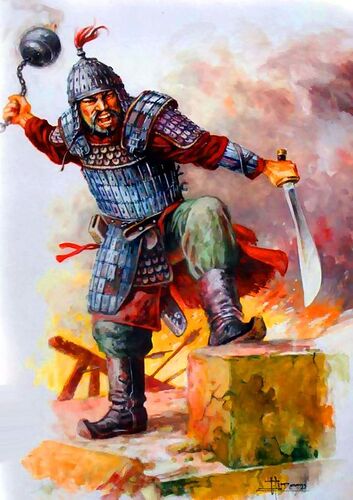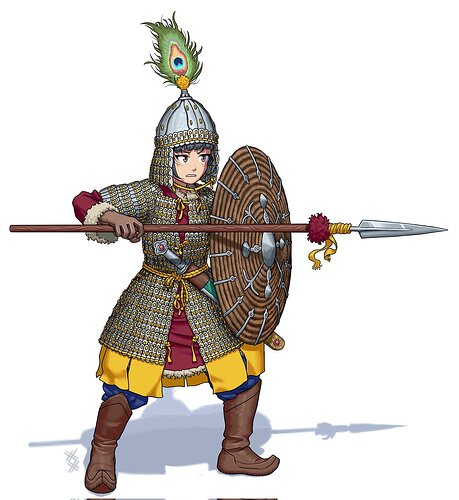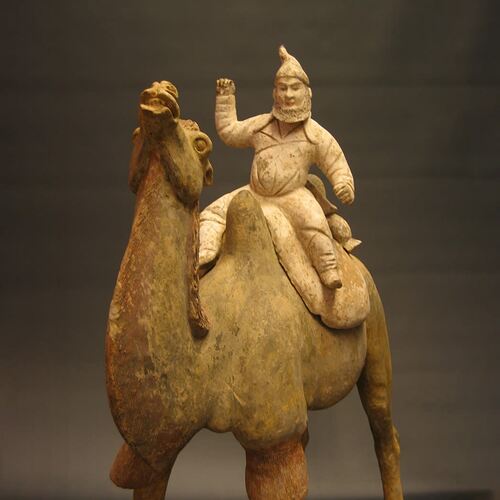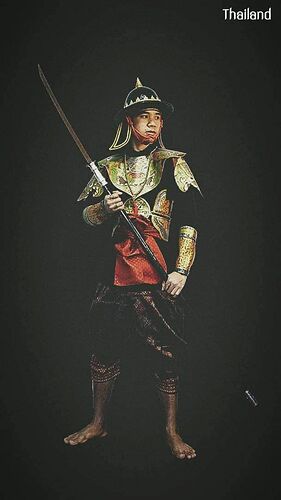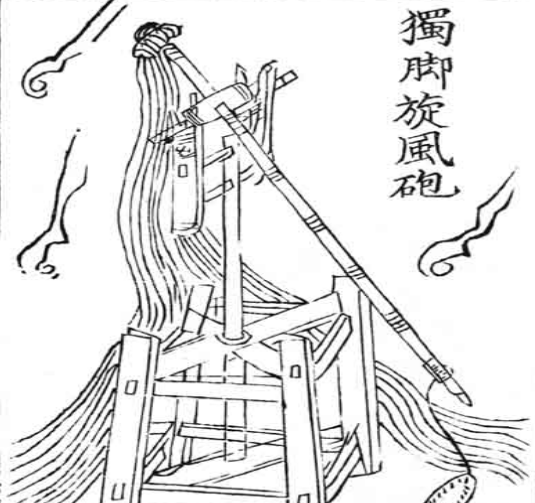If Siamese aren’t Sinosphere then Tibetans aren’t Sinosphere either. Both are equally midway between Indosphere and Sinosphere.
Tibetans at least are of East Asian origin and historically had more contacts with China (especially during the Tang era) than Siam ever had. And also Tibetans fit with a nomadic or semi-nomadic theme and can be introduced with the Jurchens and Khitans in an Asian steppe themed DLC, whereas the Siamese are completely unrelated to the steppe and would be awkward if introduced in such a DLC.
I’d propose the Siamese to be introduced in a SE Asian themed DLC together with Chams and Mons.
The more important argument is designing fun civs not broad ethnic origins otherwise we wouldnt hsve like 6 Germanic civs
The biggest issue I see with this proposal are the UUs. Honestly they don’t feel that unique to me, Tiefutu sounds just like a reskinned version of the Byzantine Cataphract or the Slav Boyar, and the Khampa sounds like a reskinned version of the Armenian Warrior Priest.
I have some ideas regarding the UU of potential Asian steppe civs
Khitans
Pishi Guard
Initially I imagined it to be a heavy infantry unit that has a unique stand-ground ability in which it cannot move but receives 20% less damage from all attacks. But now that I come to think of it it’s probably better to make this a cavalry UU. Of course it’s not easy to make a cavalry UU considering that we already have many of them in game, however trust me the one that I’m proposing would be different from all of them.
The Pishi Guard would be a heavy cavalry unit that can shoot a short-ranged arrow at the enemy right before melee combat. The range wouldn’t be long it would only be around 2. The attack of this arrow would be quite high around 10 pierce and has a 100% accuracy, although it does not ignore pierce armor unlike the Armenian UU. And after this short-ranged attack the unit would switch itself back to melee mode using a Guduo mace or an Iron Whip, and cannot be switched back to ranged until the next battle, where it would shoot one arrow at the enemy again and then turn to melee. This would make it distinct from the Ratha. In other words, it’s somewhat like the Coustillier’s charged attack, but it’s a pierce charge attack instead of a melee one.
The appearance of this unit could be modeled based on medieval Chinese heavy cavalry (left side of the picture)
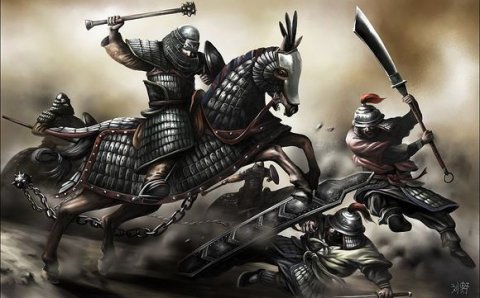
Jurchens
Thunderclap Grenadier
A siege infantry that throws grenades at enemies and has bonus damage against siege units as well as standard and defensive buildings, but weak against anything else. Such a unit does not currently exist in AoE 2 and hence is very unique. Some people might say that why giving a gunpowder UU to the Jurchens shouldn’t it be more suitable to the Chinese? Well, first of all it’s highly unlikely that the devs would give a 2nd UU to the Chinese given that it’s one of the original AoK civs. Secondly we do have historical records to support their use of gunpowder weapons. The Jurchens were credited with inventing the earliest iron cased bombs / grenades and used them against both the Song and the Mongols. The Song had bombs and grenades of their own but they were ceramic, clay, paper, or leather cased, and paled in comparison to the Jurchen iron cased ones.
The appearance of this UU should be something like this
Tibetans
Zimchongpa
I honestly think that the chances of them getting introduced into the game are extremely low, however if they ever get introduced I wanna this to be their UU. It’s two units combined in one and costs only 1 pop slot, a normal infantry armed with a shield and a spear somewhat similar to the Ghulam in appearance, and his Tibetan mastiff war dog. The duo would be somewhat similar to the European explorer and his war dog in AoE 3. Tibetans are semi-nomadic herders and they employ the Tibetan mastiff as guard dogs, and it’s not something inconceivable that they would use dogs in warfare. Plus according to ancient Sinitic records the Western Qiang people worshipped white dogs and white wolves, so this also syncs well with their Qiangic origin. This would make it one of the strongest melee infantry UU in game, since when it attacks it’s basically 2 against 1. Its HP would show as a green bar + a white bar, the green bar would be the HP of the infantryman and the white bar would be the HP of his dog. This unit would have a bonus damage against Eagles and Monks.
The appearance of the infantry would be something like this
And the Tibetan Mastiff looks like this
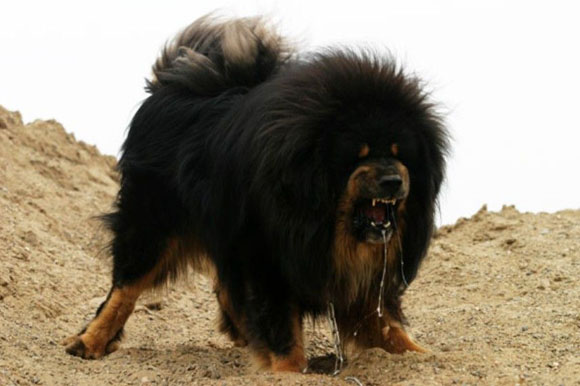
Put the two together and you’ll get the UU
Tanguts
Camel Slinger
This is ought to be the most non-unique UU I’ve proposed. It’s basically a Bactrian camel rider armed with a slingshot and has bonus damage against infantry units. You can think of it as a faster slinger with more HP. Couldn’t really find a picture of it but it should look like this although armed with a slingshot.
Siamese
Not related to the steppe and I don’t think they should be introduced in the same DLC as the above steppe civs, but since people mentioned them I’ll share my opinion about their UU here as well. I propose 2 alternatives:
- Elephant Gunner
Their UU could be a gunpowder elephant, like an arquebus or a small cannon mounted on the back of an elephant, and it would have bonus damage against walls & gates, castles, and standard buildings.
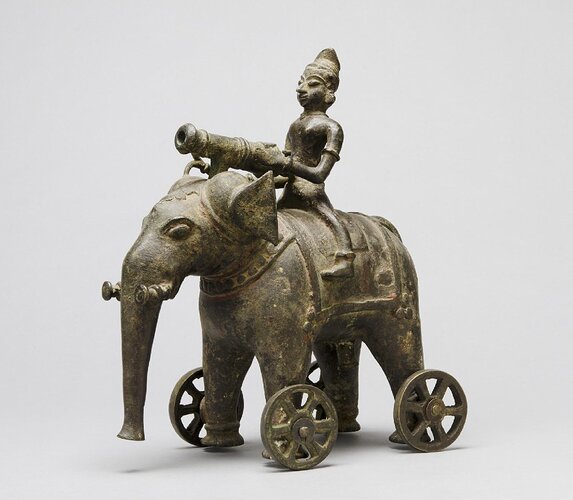
- Siamese Royal Guard
Alternatively their UU could be a heavy infantry armed with a glaive, with high melee attack and a bonus damage against cavalry and elephant units. Glaives and glaive-like polearms were quite commonly used in late medieval SE Asia.
Like I’ve explained in another thread, DLC needs to follow certain historical or regional patterns otherwise we could introduce an European civ with Tibetans and Jurchens in the same DLC.
The only DLC that did not follow this pattern was the Forgotten introduced back in 2013 but at that time it was still an unofficial expansion. All the expansions from the African Kingdoms onward have followed the historical / regional pattern.
Lmao
Anyway, good comment
I’m not necessarily against it, I’m just not sure how intuitive it is to have a cavalry archer fire only one shot before being forced to switch to melee combat.
I know you don’t like Crossbow Cavalry, but frankly this feels more like how cavalry crossbows work. Similar to early dragoons, the crossbows would be pre-cocked, and fired during a charge to strike first before entering close combat. Although we cannot be sure whether it was on horseback or on foot, Khitan heavy cavalry soldiers did use crossbows.
Persians get the Savar.
Yes, it’s just a replacement for the original Persian Paladin. But in any case, this points out that old civilizations also have the opportunity to acquire new things. A while ago there was a topic discussing Fire Lancer as the previous stage of Hand Cannoneer, which is a very feasible design. It can serve the Chinese, Jurchens, Mongols, Koreans, and even the Khitans.
In my opinion, if we were to introduce Grenadiers, the Jurchens, Chinese, and Byzantines as well should all be eligible for access. Whether it’s an iron shell or a ceramic jar, it’s still a grenade.
Trying to make the civilization that learned gunpowder from the Chinese have a more distinct identity of gunpowder without intending to change the Chinese people will make this civilization that claims to have invented gunpowder become farther and farther away from historical accuracy.
But there don’t seem to be any medieval records of Tibetan Mastiffs at war.
The use of dogs in warfare is indeed not inconceivable, as other peoples also used dogs in warfare, but other peoples have even better traces of it in medieval records. Alaunts, the war dogs used by the Alans and Vandals, is one example. I think I’d like to see Alaunts more than Tibetan Mastiffs.
After thinking about it I feel like it’s not that appealing, even though visually it has a dog.
To make a metaphor, it is like two Karambit Warriors tied together and must move and attack together. I mean, both are melee units, so it is almost the same as training soldiers and dogs separately, and letting soldiers and dogs move and fight together. There seems to be no need to merge them into one.
I’m not even sure if a melee + a ranged would be better, but maybe you can try it and see if you want 2 in 1 as a gimmick. Tibetans were said that not good at bows and arrows, but they are one of the few ethnic groups in East Asia who have a tradition of using slings. The Tibetan sling is called “烏朵” in Chinese, and the romanized Tibetan spelling seems to be urdo. Maybe pair an Urdo Slinger with a dog? Although in mycase I 'd like to simply make the Urdo Slinger the UU, and maybe even make it a mounted slinger unit rather than just a foot slinger unit to reflect that herdmen who usually good at using slings tend to be cavalry in their armies.
I know what you’re actually trying to reference is Poxi 潑喜.
The description of the people of the Song Dynasty is that Poxi was a standing army of 200 people with “Xuanfengpao” (旋風砲) installed on the back of camels. The “Xuanfengpao” is a kind of small, light catapult, as shown below.
Although the projectiles they fired were fist-sized, they fired multiple at a time rather than one. Mechanically it should be more similar to Onagers, even though they have lower attack, smaller blust radius, smaller projectiles and possibly shorter range, they shouldn’t be slingers.
I used to hate the concept of Crossbow Cavalry, but at this point I don’t mind it anymore. Yep it could fire a crossbow shot right before melee, that’s still 100x more realistic than scimitar-throwing Mamelukes. It’s a game not real history so a certain level of imagination can be tolerated, as long as it’s based on something in actual history.
The Fire Lancer could work as an East Asian regional unit I don’t mind that, although I still think the Jurchens could have the Thunderclap Grenadier as their UU, credit where credit is due they were recorded with inventing the earliest iron cased bombs so just let them have it.
And my concept of the Fire Lancer is slightly different from yours. I imagine it as a flamethrowing infantry kind of like the land version of the Fire Ship. The earliest Chinese firelances were primarily used to generate flame and smoke, it was only later that some pellets or shrapnel had been added for extra damage.
They at least used them as guard dogs, so it’s not something inconceivable, and there were other people that used war dogs. Again it’s just a game not real history, as long as it’s based off something realistic it could work, it’s the same thing with Khitan Crossbow Cavalry, if you think that’s okay then why denying Tibetan war dogs?
A more sensible comparison would be with the Bulgarian Konnik. Instead of having the infantry mode appearing only after the cavalry mode lost all HP, this would be akin to having two modes fighting at the same time although in this case both could be considered as infantry. This would make the unit harder to counter than other infantry since it has 2 HPs, and it is what makes the unit unique.
I’m not really a fan of your slinger proposal. Nothing proves that they ever used slings while mounted, and plus slingers are the UU of the Incas. Even though you could make the slingers a shared regional unit between the Incas and the Tibetans, the later is still missing a UU.
My proposal is just a more realistic or logical version of the Poxi. Sometimes you should take these ancient records with a grain of salt cause they aren’t always accurate. I can’t imagine something as big as a Xuanfeng Pao could be mounted on the back of a camel. From the picture it doesn’t look small at all.
Surely we can let the heavy cavalry UU fires a crossbow and then fight in melee.
Though the Crossbow Cavalry in my concept is a pure mounted archer UU since I want to simplfy the things. Let the Crossbow Cavalry and Cavaliers go together, and the representation of melee combat is performed by the Cavaliers. Just saying.
Not just mine. That topic was not created by me.
But I think this mean that the Fire Lancers being the previous stage of the Hand Cannoneers is reasonable and intuitive to many people.
I have nothing against the war dogs, but I think obviously the use of dogs in combat is not really special. That’s why I emphasized that other peoples also used dogs in warfare.
When it comes to medieval records, I don’t seem to have seen them either. I mentioned Alaunts just because if we were to introduce war dogs, they would be more qualified than Tibetan Mastiffs because of the records.
No, this is the wrong comparison.
Your unit is one infantry + one dog, and the dog can be considered equivalent to infantry. This looks like two Karambit Warriors using totally 1 population have to move and fight together, that’s it.
If you let two infantry units (in the example, the Karambit Warriors) fight together, they will also have two HP bars. Can you see why I think 2 infantry in one is a bit unnecessary?
I didn’t have to make the Urdo Slingers mounted. Being on foot is totally fine. Just that being mounted is interesting and reflect the fact that herdsmen were cavalry in the army.
There is no conflict between Tibetans having sling-using UUs in their Castles and Inca Slingers. Obviously they can have different stats and therefore different niches. In addition to Urdo Slingers having better base stats, I would have liked them to have attack bonuses against camels and elephants. This works well with their Stable units and somewhat reflects their history of invading India.
Maybe it’s just that it looks very big in the picture, or maybe it comes in all sizes from large to small and the one in the picture is just not the small one.
I’ve also seen people describe it as being like a slingshot. Note that slingshot is not sling. A slingshot is physically more similar to a catapult than to a sling. You can imagine that it’s a small catapult or a large slingshot on camels’ back. The potential energy stored in the rope can be used to launch multiple stones at once, rather than throwing a single stone with arm strength.
If it was just a person riding a camel throwing a single stone, I don’t think the Song Dynasty people would pay special attention to it, let alone mark them as “炮手” (pao users) and the things on the camels’ back as “Xuanfengpao”. The terms used in the records indicate that there must have been some special devices. Bactrian camels are also relatively large and suitable for carrying, and we can even guess that two or more camels in parallel to carry one Xuanfengpao.
Regardless, the design of Camel + Catapult is both historically supported and particularly interesting for the game. I don’t understand why I should give up.
Maybe camels pulled the catapult devices?
The verb used in the original text is “陡立”.
陡 means “steeply” and refer to “vertically” here.
立 means to stand or to set (something).
“陡立旋風砲於橐駝鞍”: vertically set Xuanfengpao (the catapults) on camels’ saddle.
Thais originated in South China so they are more East Asian Origin. Tibetan language, culture, religion do not match China.
Well… the Tai (without the H) originate in modern day South China, they trickled down into Southeast Asia and when they settled there they became the Thai (with the H).
I would not be surprised that they will use the Northern China civ like the Jurchens in combination with a Korean campaign.
And will use the China campaign for the South Chinese border. Then is the Thai more likely.
However best case scenario would be indeed a dedicated Southeast Asian DLC with the Mon and Chams together with the Thai
South China wasn’t really a part of Sinosphere at that time, and the native inhabitants there were more SE Asian like and they were only assimilated later.
Tibetans speak a language derived from ancient Sino-Tibetan, indicating that they originally came from the same stock as the ancient Sinitic people.
Like I mentioned to another person, South China wasn’t a part of the Sinosphere at the time when Tai-Kradai people originated there some 4,000 years ago. The people there were more SE Asian like originally. The Sinitic invaders came from the north and took the region by force around 2,000 years ago, forcing some of the natives to move into SE Asia. The ones who stayed behind actively resisted Sinitic rule for hundreds of years, though eventually much of them got assimilated, and the few who didn’t assimilate became the ancestors of the Tai-Kradai ethnic minorities such as Zhuang, Dong, Hlai, Shui, Tai Lue, etc.
No they speak a language derived from Tibeto-Burman and their script is more similar to Indo Aryan Languages.
Tibeto-Burman is a part of the Sino-Tibetan family. I speak some Middle Chinese and when I heard a Tibetan girl saying numbers 1 to 10 in her language I can understand 90% of them.
The script was invented much later and was likely influenced by Sanskrit. Cultural influence doesn’t equate to ethnic origins.
Like when was it invented?
Also you didn’t say anything about their religion and culture part which are also very different from Confucian China.
I never denied that their culture is different from Confucian China, however that doesn’t change the fact that their ethnic origin was the same or similar as the ancient Sinitic people.
However the same thing cannot be said for the Tai-Kradai, whose ethnic origins were different from Sinitic and were more similar to Austronesian or Austroasiatic.
Ok since you did not mention even though I asked. Tibetan script of Sanskrit style was invented in 6th century. It’s clearly not recent.
